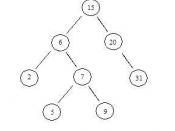On August 10, 1987, the largest cross-border merger in Europe made history when the two giants of European electrical equipment industry--- Asea AB of Sweden and BBC Brown Boveri Ltd. Of Switzerland--- merged to create Asea Brown Boveri (ABB).
The two men at helm are Percy Barnevik and Thomas Gasser. These men faced the challenge of building a new company on the foundation of two companies that had spent almost a century facing each others as arch rivals. With its goal to be global with technology and local in its customer orientation, ABB desires to be the most competitive, competent, technologically advanced, and quality-minded electrical engineering company in its fields of activity.
With the above in mind, ABB has to resolve three internal contradictions. That is, to be global and local, big and small and decentralized yet centralized. In order to resolve these contradictions so as to create real organizational advantage, it adopted several strategies.
To optimize the advantage of being a global company, ABB specialized in the production of components of major products around the world. This enables them to increase economies of scale and scope. In addition, efforts are put into coming up with cost savings measures like component outsourcing and overhead cuts whenever feasible. This will give ABB the competitive edge in cost. Also, managers and technologists are rotated among the companies of ABB around the world to share their expertise and solve problems. However, ABB aimed to be local as well. With the belief that new orders are mostly awarded to companies with strong local presence, ABB began an expansion strategy which found Barnevik's embarkation on an acquisition program around the world. In a bid to be local, ABB builds products in the countries they sell them, recruits the best talents from local universities...


